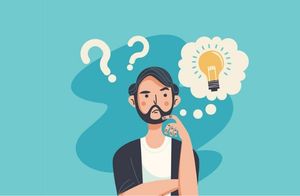Or go to our Shopify Theme Detector directly
Omnichannel Marketing Examples
Last modified: January 16, 2024

Are you wanting to know more about omnichannel marketing, but still don’t understand it? You might understand more with a few omnichannel marketing examples. In this article, we provide a definition of omnichannel marketing and provide some examples for you.
| # | Name | Image | |
|---|---|---|---|
| 1 |

|
Omnisend Email Marketing & SMS
|
|
| 2 |

|
Omisell Omnichannel Management
|
|
| 3 |

|
Kustomer
|
|
| 4 |

|
Marsello
|
|
| 5 |

|
Loyalty Experience Manager
|
|
| 6 |

|
Actindo Unified Commerce Suite
|
|
| 7 |

|
eRetail Express
|
|
| 8 |

|
Vitals: 40+ Marketing Apps
|
|
| 9 |

|
XOOT | 25+ Vital Apps | Upsell
|
|
| 10 |

|
Free 25+ Vital CX Apps
|
|
|
Show More
|
|||
What Is Omnichannel Marketing?
Omnichannel marketing is the combination of lots of different platforms and engagements into one seamless and integrated purchasing experience. The idea is that you’re going to improve the experience of the audience, and this will increase your conversion rate and improve revenues for your business.
Omnichannel marketing takes place across several different platforms, including online and offline platforms. For instance, you can communicate on social media, email, website chat facilities, in-store, telephone and other options. With omnichannel marketing, all the correspondence is kept in a central database for your customer service team to refer to in future communications.
One of the important features of omnichannel marketing is that the process doesn’t end with a purchase. Instead, the process continues with after sales, allowing you to build loyalty with your customers. This has a benefit of allowing you to have higher levels of customer retention and more sales.
Why Is Omnichannel Marketing Important?
Omnichannel marketing is vital for the success of the modern business. This is because it has the potential to add lots of revenue to your business. The average business can earn up to 10% revenue by using omnichannel marketing. In addition, you can cut costs. Therefore, your profit margins can also increase.
In addition, the customer service is much better. Therefore, your customers can often spend more on your website. And they are more likely to speak more positively about your website and brand, this can bring more customers to your website.
Finally, omnichannel marketing often allows your customer service teams to have less work to do. Therefore, you can have them be more productive.
Omnichannel Marketing Examples
Here are some examples of omnichannel marketing.
Example one:
A customer wants to buy one of two products and contacts your company via social media. They inquire which product out of the two is in stock. You inform them of which stock is available. Then the customer emails your sales team about a potential offer and whether it is still available. These correspondences are noted in a log.
The customer then visits your store and says they spoke to someone about the two products. Your customer service team know the customer and can then put through the sale with the offer. The customer leaves happy.
Example two:
A customer is on your website and places an order for a product. They then contact you via your email address about some customization they want on the product. After 24 hours, they contact your sales team about the delivery time. All of these communications are kept in a central log that allows the customer service team to know what order is where.
Enhancing Omnichannel Strategies
Integrating Personalization
Businesses like Woolworths and Benefit Cosmetics show the power of personalization. Woolworths uses customer data to tailor app content, while Benefit segments email campaigns for targeted engagement.
Expanding Through SMS and Social Media
Companies like boohooMAN and ALDI leverage SMS and social media for effective omnichannel marketing. boohooMAN’s personalized SMS campaigns boost ROI, while ALDI’s social media strengthens brand trust.
Creating Seamless Online and Offline Experiences
Brands like Toolstation and British Airways excel in blending online and offline channels. Toolstation’s digital and physical integration offers a seamless shopping experience, contributing to substantial revenue growth.
Case Studies in Omnichannel Excellence
Starbucks: A Model of Digital Integration
Starbucks demonstrates the effectiveness of integrating digital and physical channels. Their mobile app allows customers to order and pick up in-store, contributing to a significant year-over-year revenue increase.
Coca-Cola: Mastering Visual Engagement
Coca-Cola’s omnichannel strategy excels in visual marketing. Their ‘Share a Coke’ campaign, supported by high-quality imagery and celebrity endorsements, showcases the impact of consistent visual branding.
CVS Health: Coordinating Healthcare Services
CVS Health’s omnichannel approach in healthcare services offers customers multiple purchasing channels, from in-store to online prescription delivery. This coordinated effort of CVS Health as a leader in revenue among global brands.
Conclusion: Omnichannel Marketing Examples
The two above omnichannel marketing examples are simple illustrations about how omnichannel is used. But essentially whenever the customer service team can view all the correspondence with a customer, regardless of the platform(s) they used, you’ve got a good omnichannel marketing system. With Shopify, this can be easy to implement with Omnisend, a great app for all.
-
What are some innovative omnichannel marketing examples in the fashion industry?
Innovative omnichannel marketing examples include brands like Zara, which blend physical stores with mobile apps to offer features like in-store pickup, online ordering, and personalized recommendations.
-
Are there examples of omnichannel marketing in the automotive industry?
Automotive companies like Tesla have incorporated omnichannel approaches by allowing customers to configure and order vehicles online, schedule test drives, and receive updates via mobile apps.
-
Can you provide examples of omnichannel marketing in the sports and entertainment industry?
Certainly! In the sports and entertainment industry, teams and venues have adopted omnichannel marketing strategies to engage fans. For instance, sports teams often offer mobile ticketing options to purchase tickets.

 PageFly Landing Page Builder
PageFly Landing Page Builder  Shopify
Shopify  SEMrush
SEMrush  Website Maintenance
Website Maintenance  UpPromote
UpPromote